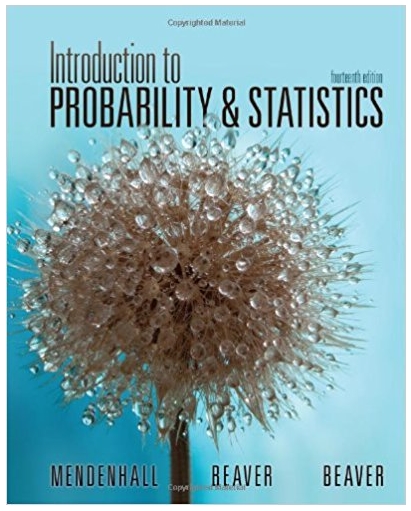Question
1. Consider a binomial random variable with n = 6 and p = 0.8. Let x be the number of successes in the sample. (Round
1. Consider a binomial random variable with n = 6 and p = 0.8. Let x be the number of successes in the sample. (Round your answers to three decimal places.)
(a) Find the probability that x is 3 or less.
(b) Find the probability that x is 3 or more.
(c) Find P(x < 3).
(d) Find P(x = 3).
(e) Find P(3 ≤ x ≤ 4).
2. Let x be a binomial random variable with n = 5, p = 0.2. Find the following values. (Round your answers to three decimal places.)
(a) P(x = 4)
P(x = 4) =
(b) P(x ≤ 1)
P(x ≤ 1) =
(c) P(x > 1)
P(x > 1) =
(d) μ = np
μ =
(e) σ = sq rt of npq
σ =
3. Find P(x ≤ k) for each of the following cases. (Round your answers to three decimal places.)
(a) n = 20, p = 0.05, k = 2
(b) n = 15, p = 0.7, k = 8
(c) n = 10, p = 0.9, k = 9
4. Find the mean μ and standard deviation σ for a binomial distribution with n = 100 and the following values of p. (Round your answers to two decimal places.)
(a) p = 0.01
| μ = | |
| σ = |
(b) p = 0.9
| μ = | |
| σ = |
(c) p = 0.2
| μ = | |
| σ = |
(d) p = 0.8
| μ = | |
| σ = |
(e) p = 0.5
| μ = | |
| σ = 5. According to the Humane Society of the United States, there are approximately 77.5 million owned dogs in the United States, and approximately 40% of all U.S. households own at least one dog.† Suppose that the 40% figure is correct and that 15 households are randomly selected for a pet ownership survey. (a) What is the probability that exactly seven of the households have at least one dog? (Round your answer to three decimal places.) |
Step by Step Solution
3.27 Rating (150 Votes )
There are 3 Steps involved in it
Step: 1
ANSWER 1 n6 p08 a P X3 P ...
Get Instant Access to Expert-Tailored Solutions
See step-by-step solutions with expert insights and AI powered tools for academic success
Step: 2

Step: 3

Ace Your Homework with AI
Get the answers you need in no time with our AI-driven, step-by-step assistance
Get Started


